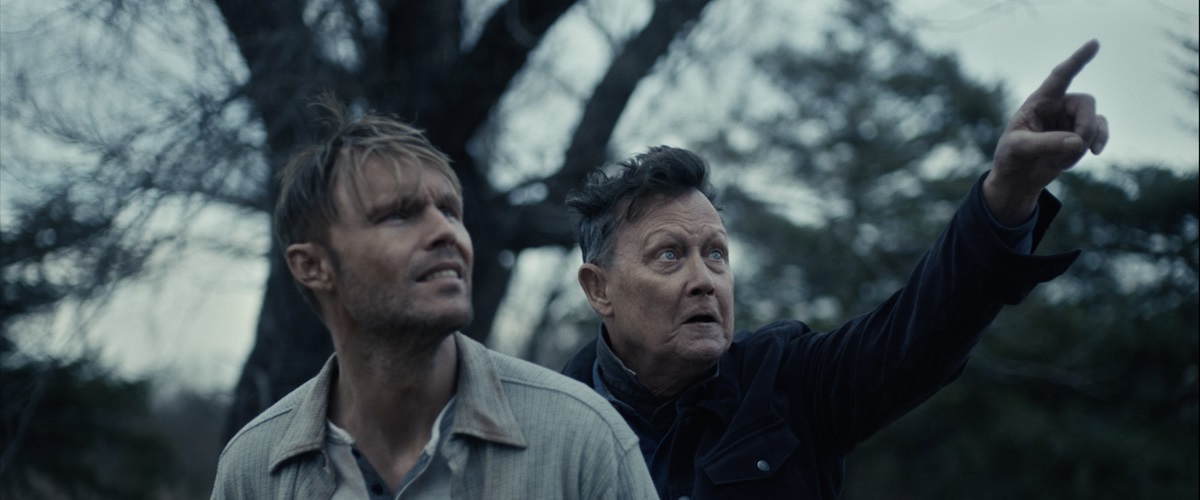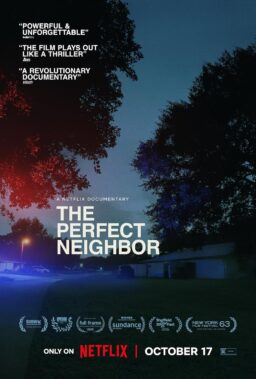Fantasia has been underway for two weekends in Montreal, and through a robust virtual platform. As national news stories about rising hospitalizations present true horrors, genre fans are escaping into the movies, hoping to be at least distracted for two hours, and maybe even inspired too. A trio of early films in this year’s line-up all exist because of ambitious filmmakers, but they also serve as a reminder that ambition only gets a director so far. Two of them start promising before slipping through your fingers, although one much more drastically than the other, while a third succeeds by being defiantly unwilling to traditionally satisfy viewers, presenting them with a dark vision of a family home built on trauma and abuse, one that’s inevitably going to collapse.
Let’s start there. Easily the best of my early films has been Vincent Grashaw’s “What Josiah Saw,” a film that was accurately compared to last year’s excellent “The Dark and the Wicked” in the Fantasia program. Like that film, Grashaw’s work is unapologetically brutal, the kind of haunting drama that feels unsettling and dangerous even in its quiet, character-driven moments. The ensemble is very strong, including a great turn from Nick Stahl, but it’s really Grashaw’s confidence that holds it together. It doesn’t go where you might expect, but you trust in the journey.
With the tone of a novel that Faulkner would have thought was too messed up to publish, “What Josiah Saw” is a story set in the American heartland that unfolds as a triptych. In the first chapter, we meet the vicious Josiah Graham (Robert Patrick) and his troubled son Thomas (Scott Haze). Grashaw cuts to an exchange with a group of men who are buying up property in the area, warned that there’s really no way they’re going to get the land out at the Graham Farm, and they wouldn’t want it anyway. After all, it’s haunted by the ghost of Josiah’s wife, who hung herself from the biggest tree on the property.
Josiah has a terrifying vision one night, telling Thomas that drastic action must be taken to exorcise their family’s demons. Cut to story two, in which Eli (Stahl) is forced into a criminal undertaking involving stealing gold from a group of Romani people at a nearby carnival. Yes, it’s a sharp left turn, taking “What Josiah Saw” from something like a supernatural gothic into something that’s almost more Tarantino inspired. And yet it holds together. And it continues to do so into what feels like a domestic drama in chapter three, wherein we meet the final Graham child, the traumatized Mary (Kelli Garner), who is trying to adopt a child with her husband (Tony Hale). She eventually reunites with her brothers and things get really weird.
“What Josiah Saw” is an odd duck, a movie that jumps genres but maintains a throughline of unsettling intensity before tying them all back together. I’m not sure about the final few revelations and what they all add up to, but I am sure I will immediately watch whatever Grashaw makes next.

I’d extend that same anticipation to Maxwell McCabe-Lokos, even if I think his “Stanleyville” doesn’t live up to its clever opening half-hour. A twisted comedy that feels inspired by everything from Samuel Beckett to Wes Anderson to “Cube,” this recent Oscilloscope acquisition opens with the introduction of a dissatisfied soul named Maria (Susanne Wuest of “Goodnight Mommy”). After leaving her life behind, she’s approached by a mysterious character (Julian Richings), who informs her that she has been carefully selected for a very special competition. Not even knowing what she could win (a car!), she agrees to participate, quickly finding herself locked in a room with four quirky strangers as they compete in an increasingly surreal series of challenges.
It starts simply enough—who can make the most balloons explode using only their lungs in just 60 seconds? It gets much, much weirder. Why were these people selected? What do their very different personalities say about the human condition? What exactly are they really playing for? McCabe-Lokos piles up the questions in this odd little puzzle movie, but he stretches his concept a little too far for its own good, leading to a film that might have worked better as a short but lacks focus and weight at a feature’s length. Still, there’s an ambition here that’s admirable and engaging, even if you wish this puzzling picture came into a little more focus in the final act.

A similar and harsher realization that a film wasn’t going to live up to its potential happened with Kelsey Egan’s “Glasshouse,” a futuristic tale that feels inspired by “The Beguiled,” “Y: The Last Man,” and even “Mad Max: Fury Road” (Egan worked on that film as a stunt coordinator), but gets less and less interesting as it drags along. Egan’s concept is interesting, and yet she doesn’t imbue it with enough sensuality or mystery to give it weight or atmosphere, and the performances feel alternately wooden or melodramatic, too rarely finding the middle ground of believable human behavior.
“Glasshouse” takes place in a future that’s been destroyed by a pandemic (as nearly every other movie feels likely to do for the next decade). This one was courtesy of an airborne toxin called The Shred, which induces memory loss and dementia in those who breathe it in. A family has secured their safety in a glass house that’s been sealed off, and they’re willing to shoot anyone who gets near them. Well, that’s the case until the arrival of a mysterious stranger (Hilton Pelser), who disrupts everything in the hermetic world of Bee (Jessica Alexander), Evia (Anja Taljaard), Daisy (Kitty Harris), Gabe (Brent Vermeulen), and their forceful mother (Adrienne Pearce). Bee senses a connection to this stranger, one who eventually turns out to have a few intense secrets of his own.
Egan can’t quite find the right tone for “Glasshouse,” which lacks the sensuality of “The Beguiled” or the surrealism of similar visions of dark futures. She can’t quite grasp the urgency in this story either, pushing it through heated, emotional scenes with the young women in a way that forces them to play-act intensity instead of creating it organically through story or character. “Glasshouse” fails to world-build in a way that would ground the entire piece, making it one of those projects that gets thinner and thinner with each subsequent character revelation. It will just make you want to go outside.












